Power system planning is a discipline defined by complexity. Yet the workflows that planners rely on today often make the task even harder than it needs to be. Across the industry, market modelling tools and grida analysis platforms remain separated, each designed for different purposes and operating in isolation. The result is a fragmented landscape of databases and models that do not naturally align. Planners are forced to spend days transferring data across environments, reconciling inconsistencies, and manually adjusting results that rarely match on the first attempt.

This separation is more than just an inconvenience. It slows down decision-making at the very moment when speed and accuracy are essential. It also prevents planners from capturing the network effects that arise when multiple investments are considered together. Instead, projects are often assessed one by one and later aggregated, a process that risks overlooking synergies or, worse, producing technically infeasible outcomes. The net effect is that decision makers are left with a narrow and incomplete set of options, when what they really need is a clear, comprehensive view of the full spectrum of possible pathways.
The eRoots Approach
At eRoots, we have taken a different view. We believe that grid planning does not need to be this fragmented and that the complexity of the task calls for more than incremental improvements to existing methods. Over the past years, we have invested deeply in research and software development to design an integrated environment where simulation and optimisation are no longer kept apart, but instead work together seamlessly.

Our platform is built to remove the artificial barriers between market analysis and power system studies. Rather than juggling multiple incompatible tools, planners can now import grids directly from the environments they already use, simulate and optimise within a single software, and then define and prioritise investments with a degree of clarity and confidence that has not previously been possible. Crucially, all of this happens on the same detailed grid models used by system operators, ensuring that investment proposals are technically sound from the outset.
The shift that this enables is not incremental, but transformative. By evaluating many investment options at once, instead of stitching together separate studies, our platform reveals the full Pareto front of solutions. This means that decision makers no longer have to rely on a single “optimal” outcome. Instead, they can explore the trade-offs between cost, reliability, capacity, and resilience, selecting the strategies that best reflect policy priorities and budgetary realities.

The impact is immediate. Studies that might previously have taken weeks can now be completed in hours. Investment outcomes are not only faster to obtain, but also more reliable, since every option generated by the optimisation process is validated against the physical constraints of the grid. And because the results are presented in terms of clear trade-offs, planners gain the ability to make smarter, more transparent decisions that balance competing objectives without losing sight of technical feasibility.
The expansion of electricity grids are among the defining challenges of our time. These cannot be addressed through piecemeal fixes or by maintaining outdated divisions between economic planning and grid analysis. What is needed are integrated, technically robust that reflect the realities of modern power systems.
By embedding investment optimisation and electrical studies into a single environment, eRoots provides exactly that. Our platform gives planners the clarity to identify viable pathways, the speed to act decisively, and the assurance that every option is grounded in technical feasibility. In doing so, we help accelerate the delivery of resilient, efficient, and inclusive energy systems.
At eRoots, we do not just work around bottlenecks, we remove them. Where others see limits, we see opportunities to unlock the grid’s full potential.